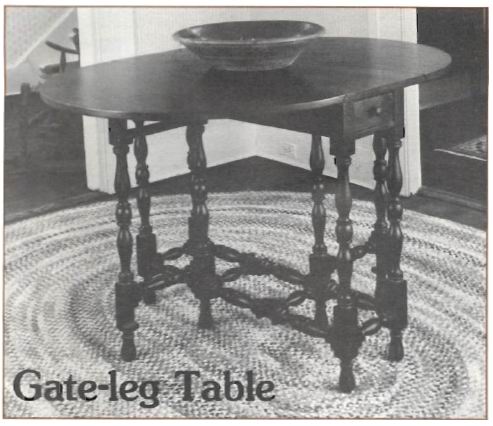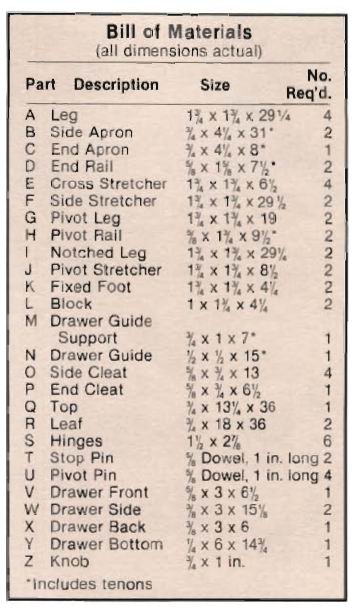Gate-leg table
The gate-leg table is a classic furniture design, one that is characteristic of and first became popular during the William and Mary period. Although our table is not an authentic William and Mary antique, it is a fine turn-of-the-century reproduction in the William and Mary style. The table is from the collection of The Washington Historical Museum, a fascinating museum of Early American, Colonial, and period furnishings located in the picturesque little town of Washington, Connecticut.
Distinctive turnings and well-balanced lines make this particular table one of the nicest examples of the gate-leg style we have seen. Because of the number of turnings and the need for precision if the pieces are to fit accurately together, this project should only be attempted by experienced woodworkers with strong turning skills.
To make the table, you will need twelve 36 in. long 2 in. square turning blocks for the turned parts. All the remaining parts can be fashioned from one inch stock (which typically measures V* in. thick) except for the two small blocks (L) which can be made from the turning square cutoffs. Turning squares are available from a number of sources, among them Constantine’s, 2050 Bastchester Rd., Bronx, NY 10461. Although our table is crafted in mahogany, either cherry, maple, or walnut would also be a good choice.
Begin by laying out the various turnings (parts A, E, F, G, 1, J, and K) as shown in the turning details. You will need a single 36 in. long turning square for each of the four legs (A), the two side stretchers (F), and the two notched legs (I). The four short cross stretchers (E) are laid out and turned on a single 36 in. long turning square, and later separated. Using the same technique, one each of the two pivot legs (G), the two pivot stretchers (J), and the two fixed feet (K) are combined on the 36 in. turning squares, turned, and then separated. The one remaining turning square is an extra in case of some error in turning or perhaps a hidden defect in the wood. After all the turning is completed take care to accurately notch the legs (I) and the side stretchers (F) where they lap together.
When you use the hyperlink http://plasmir.ru required.

